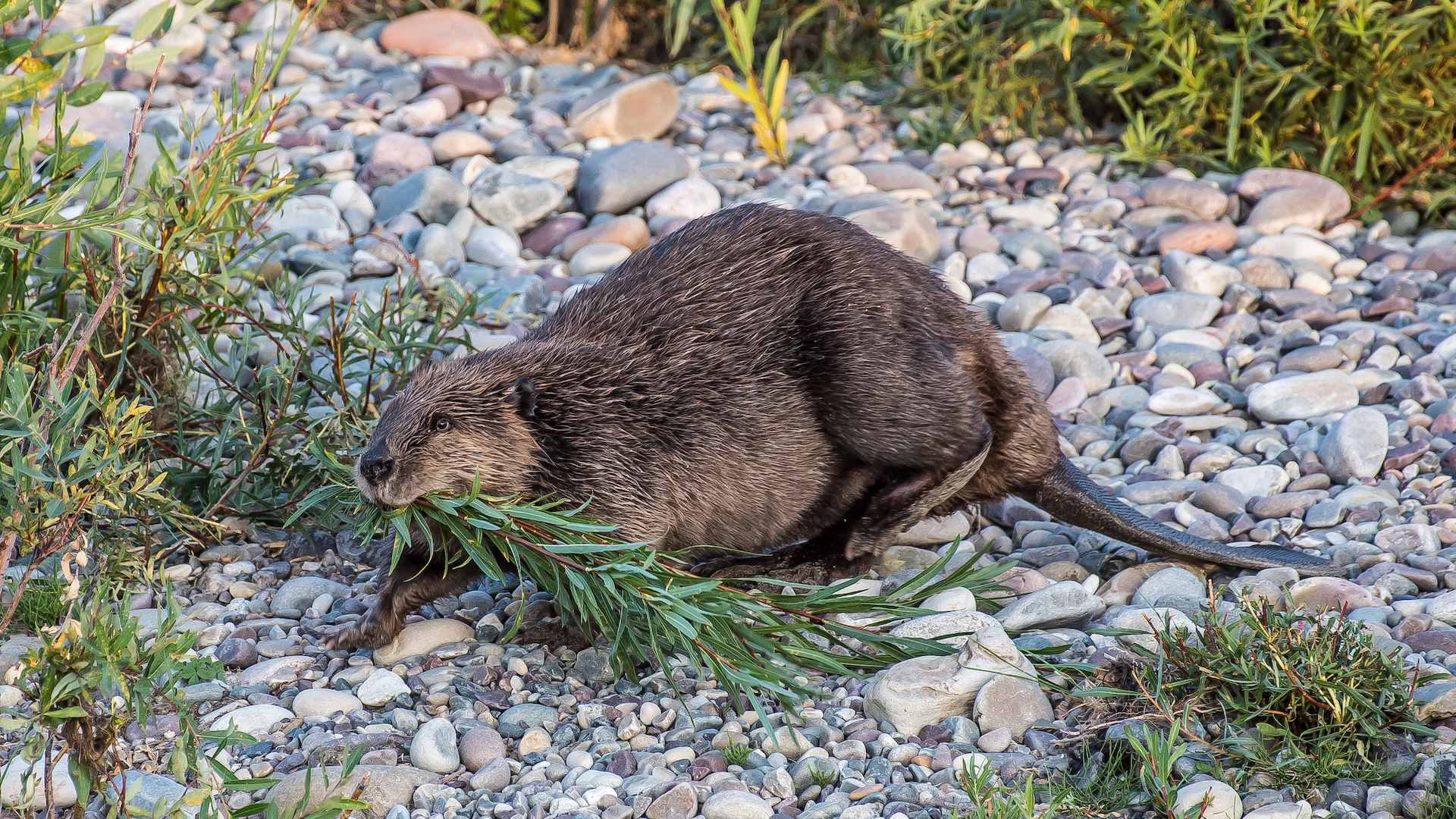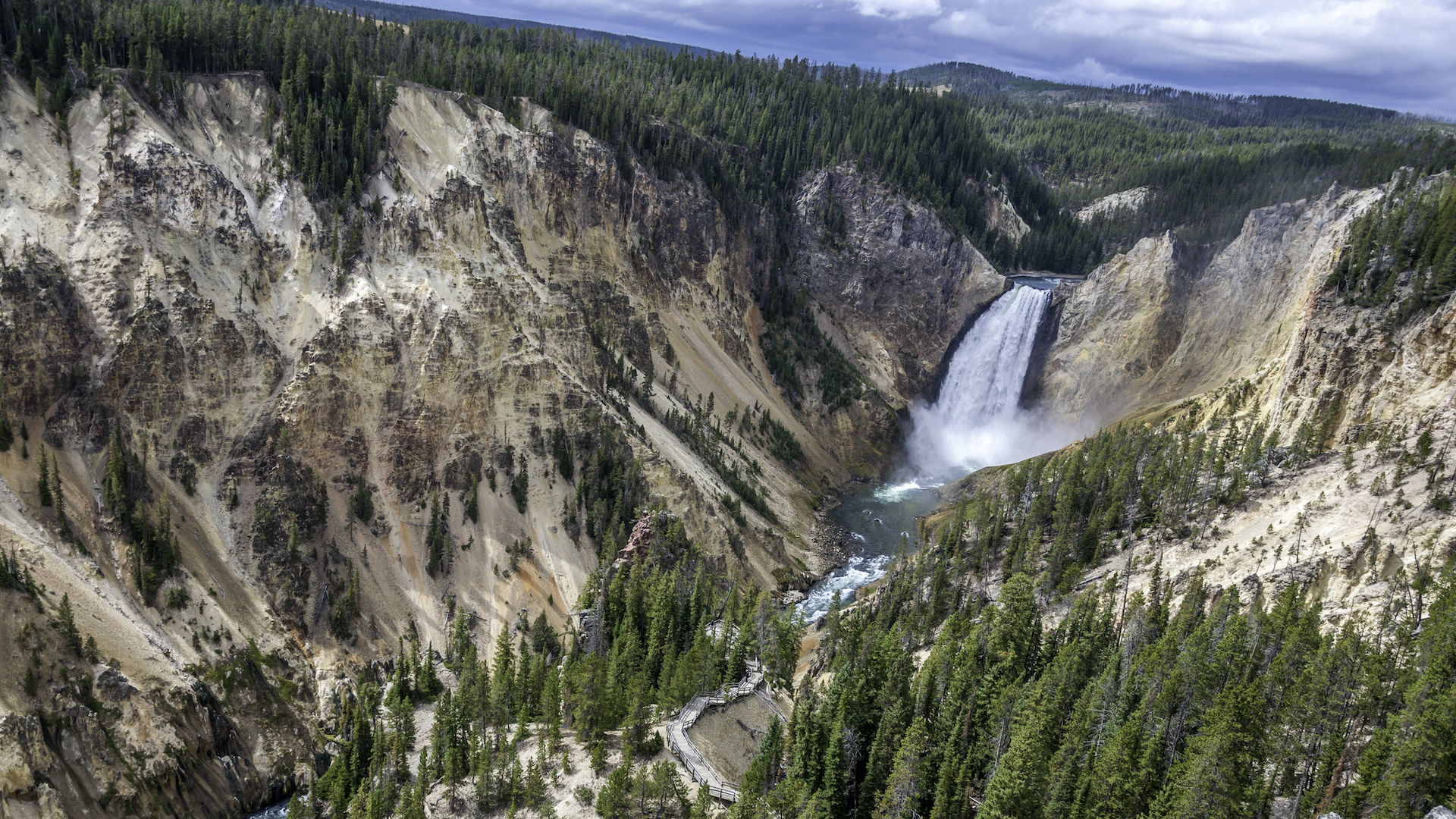Visit Yellowstone to see why the world’s first national park could also be its greatest
Everyone needs to visit Yellowstone at least once in their life to marvel at this true wilderness in the heart of America, teeming with geothermal wonders

Cut by the mighty river that shares its name, visit Yellowstone and you can see this iconic national park has been almost untouched for 150 years. It boasts 10,000 geothermal features that bubble and steam nestled between lush mountains. Hundreds of waterfalls cascade from clifftops, and 1,609 kilometers (1,000 miles) of hiking trails promise views that beckon adventurous visitors. Almost 70 species of mammals and 285 different birds inhabit the land, and there are more than 1,800 archeological sites within its boundaries. Yellowstone is a remarkable place, and there’s no wonder it welcomes several million visitors every year. There are five different entrances and 400 kilometers (250 miles) of road for travelers to explore. There are pull-off areas for magnificent sights and natural landforms, along with visitor centers bursting with information about the park’s history and geology. Visitors generally drive the warren of roads themselves, but traffic is not allowed in during winter. Guided snowmobile tours are available when thick snow is on the ground.
- Planning a camping trip? Check out our guide to the best tents
- Don't forget vital camp kit: see our camping checklist
- Carry your gear in comfort with the best hiking backpacks
More than half the world’s geysers are situated within Yellowstone. There are almost 500 active geysers that spurt out water as hot as 240 degrees Celsius (460 degrees Fahrenheit). Magma that flows close to the Earth’s surface warms up water trapped in cavities underground. Geysers are usually found close to fault lines that have created deep cracks and crevices that have since been filled with water. The fluid soaks into the ground and comes into contact with rocks heated by volcanic activity. The water at the top stays fairly cool and piles pressure on the natural kettle below. This allows the deep water to get much hotter than the typical 100-degree-Celsius (212-degree-Fahrenheit) boiling point. Eventually, so much steam builds up that it is forced to shoot upwards and causes surface water to splash out. The downward force of the water reduces and the super-hot water instantly turns to steam and shoots upwards into the sky. Eruptions are a common sight in Yellowstone. Old Faithful, the park’s most famous geyser, blows every 35 to 120 minutes. Up to 32,000 liters (8,450 gallons) of boiling water blast 56 meters (185 feet) above the ground below.
The park contains four other types of geothermal features. The hottest are fumaroles. These are essentially steam vents that aren’t surrounded by water as the vapor is too over the landscape despite being on the brink of extinction just 100 years ago. Yellowstone is the only place in the US that bison have lived since prehistoric times. An estimated 30 million were once found across the country but were hunted down to just over 1,000 in 1889. Yellowstone is a safe haven for these giant ungulates and 66 other varieties of mammal. Visitors are warned against approaching or feeding animals because the local wildlife can be dangerous.

Water is the lifeblood of the park. Yellowstone Lake is 2,356 meters (7,730 feet) above sea level, and it’s the largest of the region’s 600 lakes and ponds. It feeds directly into the Yellowstone River to the north, leading to the park’s highest waterfall. The Lower Yellowstone Falls are almost twice as high as Niagara Falls. They can be seen from a viewing platform at the bottom of 328 steps that visitors must climb back up when they’re finished looking. There are smaller waterfalls easy to access by the roadside throughout the park that can be viewed without venturing into the wilderness. Visitors can go kayaking and white water rafting to see the scenery from a different perspective.
Thousands of people visit Yellowstone to hike. It’s best to go out walking in autumn. Melting snow in spring softens the soil and can even cause landslides, so it’s wise to wait until the Earth is rock solid. Even in perfect conditions, a Yellowstone hike isn’t suitable for the faint of heart. Many routes involve crossing cold, deep rivers with strong currents, and hikers might encounter wildlife at any time of the year. Hikers should carry water and be familiar with using bear spray. Visitors are asked to stick to marked trails to prevent erosion and protect people from wandering into life-threatening geothermal areas. Some of the land around geysers is just a thin crust on top of boiling water that would give way if stepped on. Sadly, 20 people have met their end this way with incidents occurring as recently as 2016.
The unique geology and abundant wildlife make Yellowstone a destination for everyone’s bucket list. The sights are breathtaking and well worth making the long journey. Summer is the busiest season while winter is the quietest. Visit in spring to see young animals learning how to navigate their new world or head over in autumn to see the leaves change. There’s no right or wrong time to visit – Yellowstone is an incredible place all year round.
For more articles like this, sign up for the Advnture newsletter and get a FREE World's Greatest National Parks ebook.
All the latest inspiration, tips and guides to help you plan your next Advnture!

Beaver landscaping
Though once seen as a tree-cutting pest, we now know beavers play a crucial role in keeping the ecosystem healthy. Damming slows the flow and creates ponds that keep water clean, reduce erosion and eliminate dissolved nitrogen. Interestingly, the re-introduction of wolves had a strong positive effect on the park’s beavers. Elk and other deer feast on trees that beavers rely upon. Deer numbers skyrocketed in the absence of large predators, and beavers suffered from having to compete for wood. Deer numbers began dropping once wolves returned to Yellowstone, leaving more vegetation for beavers and transforming the park’s waterways.

The first national park
President Ulysses S Grant signed a bill into law in 1872 to protect the newly created reserve. It was established as a place for the public to visit and enjoy, but also to protect and preserve. The government decided the area’s natural beauty and astounding geothermal activity should be open to all to see. A railway was constructed in 1883, and cars were allowed in from 1915 onwards. Yellowstone’s boundaries have been altered slightly over the years. Once a plain rectangle, the perimeter has moved to conform to the area’s natural topography. Since then, wildlife management has been put into place and the national park service works very hard to maintain the oldest park in the world.
